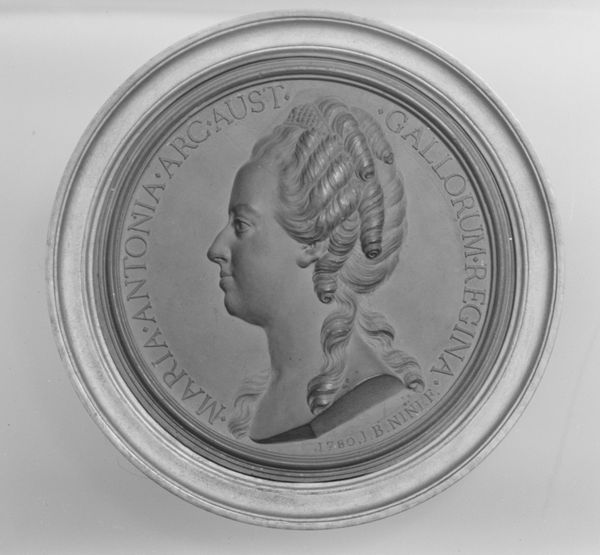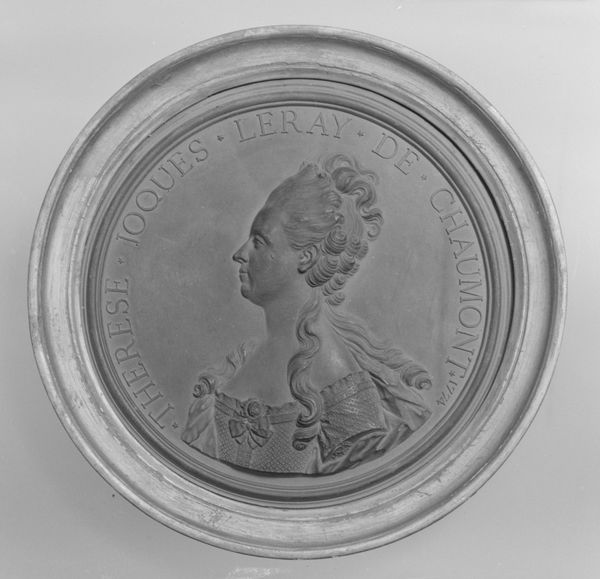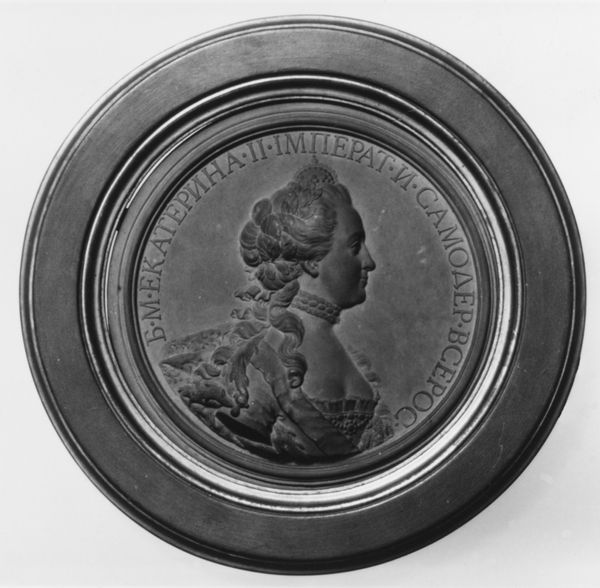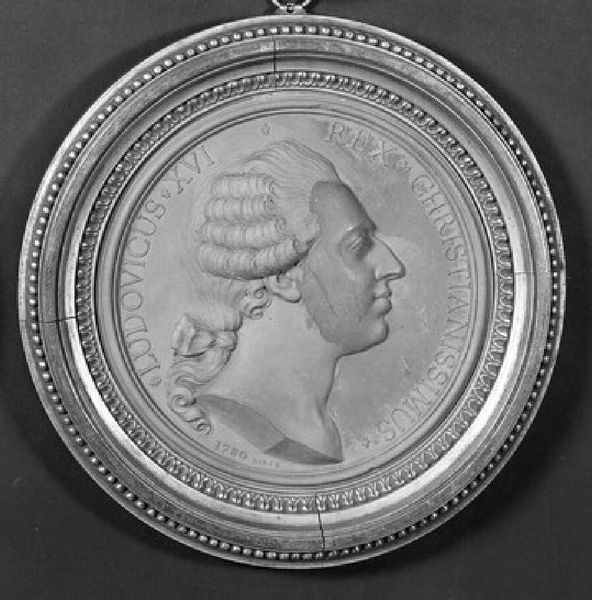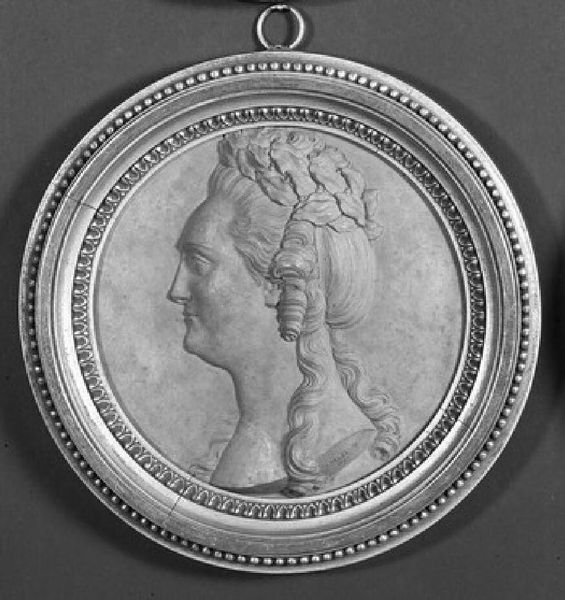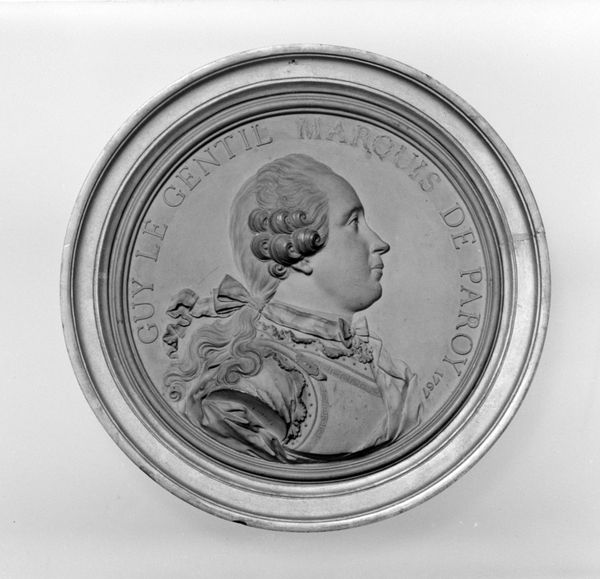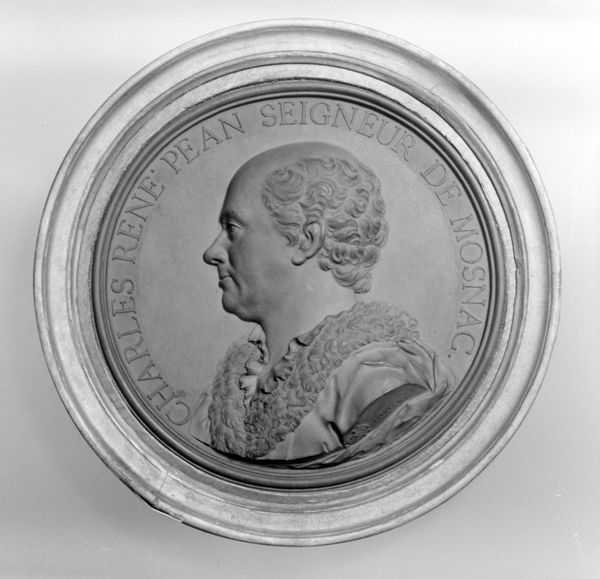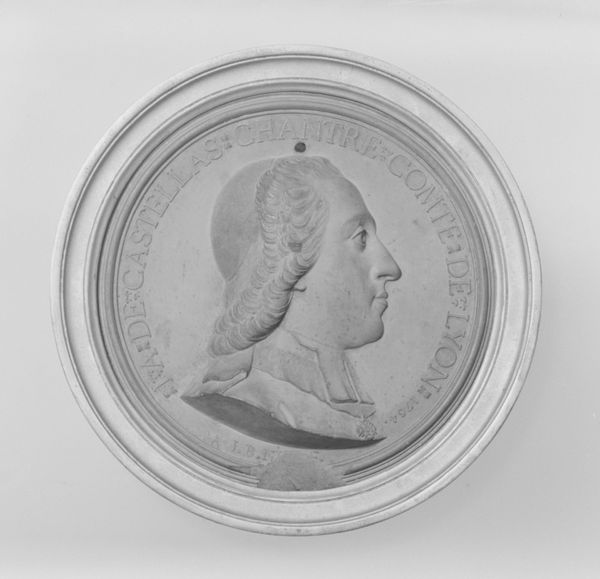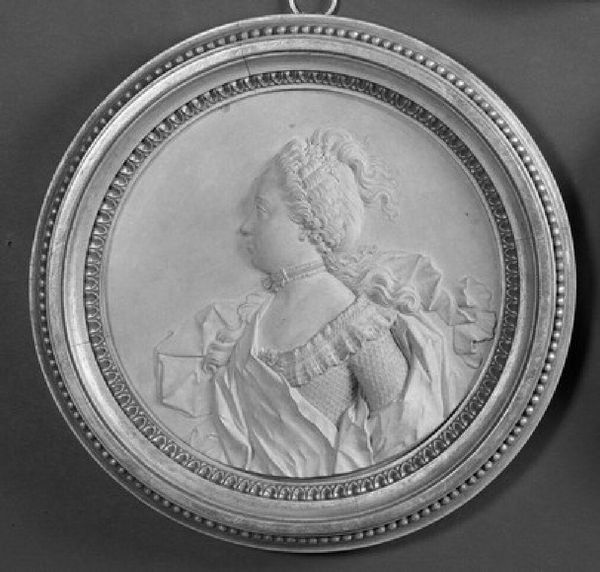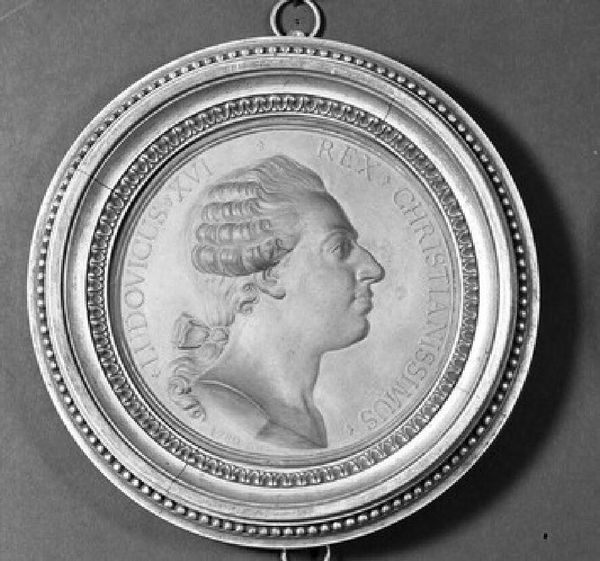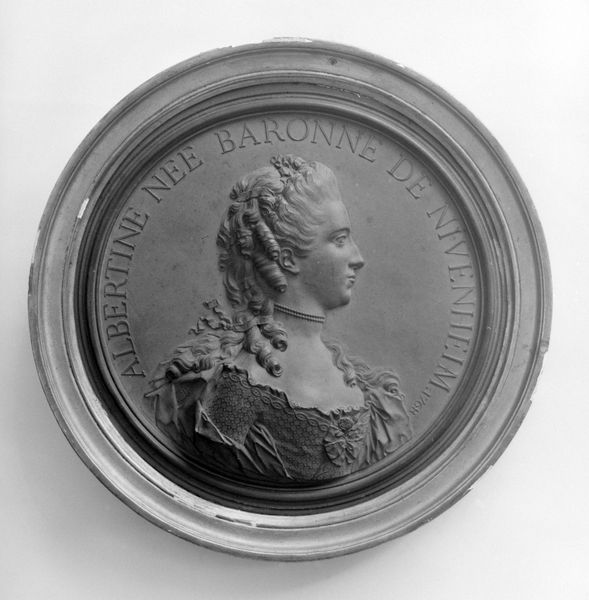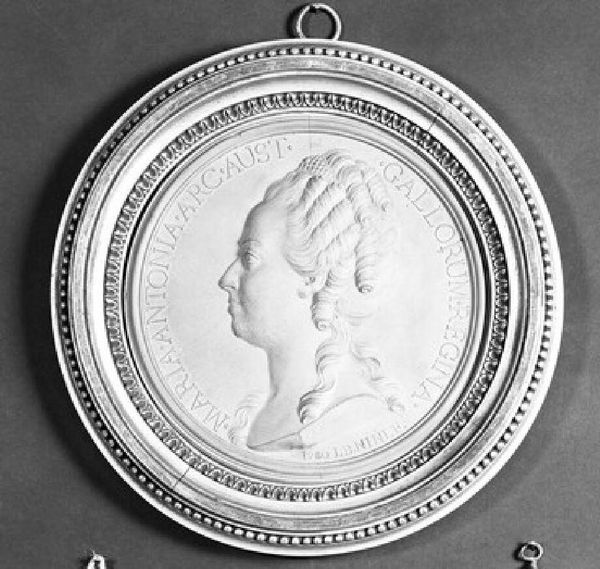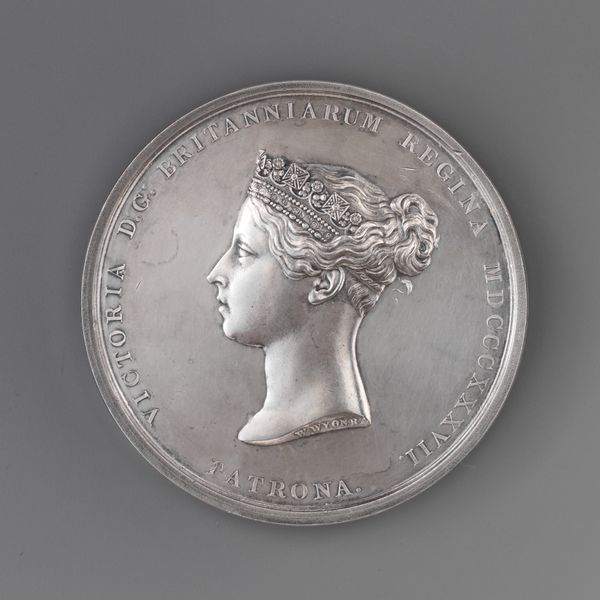
Suzanne-Elizabeth-Françoise Jarente de La Reynière 1769
0:00
0:00
relief, sculpture
#
portrait
#
sculpture
#
relief
#
sculpture
#
decorative-art
#
rococo
Dimensions: Diameter (without frame): 6 1/4 in. (15.9 cm)
Copyright: Public Domain
Curator: This is Jean-Baptiste Nini’s 1769 terracotta relief of Suzanne-Elizabeth-Françoise Jarente de La Reynière. It's currently housed at the Metropolitan Museum of Art. Editor: It's striking—so clean, yet the elaborate wig immediately signals its era, almost theatrical. There’s a coolness to it that I wasn't expecting. Curator: I see the Rococo influence in that elaborate hair and the delicate rendering of the clothing. Nini was a master of terracotta, elevating what was often seen as a utilitarian material into a medium for capturing likeness and status. It’s important to remember these portraits were essentially mass produced; Nini created them in multiples, thus serving a broader, perhaps less elite, clientele. Editor: Mass production, yes, but even then, access was certainly still dictated by class. Look at the subject, Madame de La Reynière—undoubtedly a woman of privilege, defined by her connection to a powerful man and reproduced here, circulated, almost commodified. How does this representation solidify or challenge female agency? Curator: Interesting question! Nini's skill lies in taking something reproducible and imparting individuality. The subtle curve of her neck, the almost imperceptible smile, brings her to life, differentiating her from mere stereotype, almost negotiating those pressures you speak of. Think of the labor involved— the process from clay to fired artwork. Did Nini employ assistants? Were there gendered divisions of labor within his studio? Editor: These are necessary questions to reveal art production’s hidden layers and its relation to society. The careful arrangement of Madame de la Reynière’s image subtly bolsters power structures. By situating it in the context of art as a political act, we consider how representation functions to establish and challenge social hierarchies. What’s shown and—critically—what is not. Curator: And ultimately it makes you think about the dialogue between industry, artistry and how class functions as a subject in the material and presentation of such objects. Editor: Yes, this piece leaves me thinking about who is immortalized through art, and what larger social narratives are perpetuated with each portrait.
Comments
No comments
Be the first to comment and join the conversation on the ultimate creative platform.
